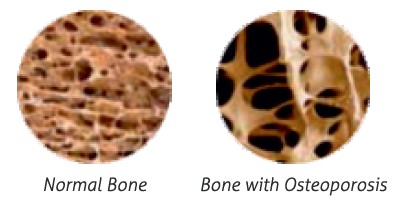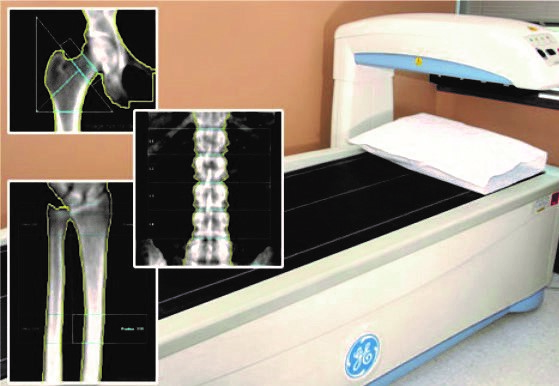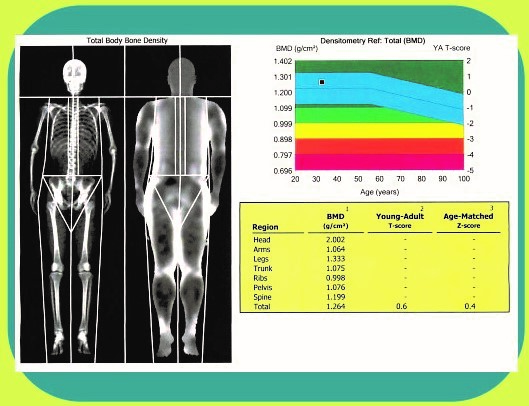DEXA SCAN – DUAL ENERGY XRAY ABSORPTIOMETRY
Osteoporosis… What is it ?
Bones are like many other parts of our body, they are constantly changing. They continue to grow in both size and strength throughout childhood and adolescence and finally reach their peak in our 30’s before beginning to age and weaken throughout the rest of our like. ‘osteoporosis’ is an advanced condition of bone deterioration, where bones lose density and strength to the point of breaking.
Osteoporosis (also known as the “Silent Disease”) rarely presents any noticeable symptoms until a fracture occurs, however sufferers may notice a reduction in their height or curvature in the spine. Osteoporotic fractures can occur from as little as a slight bump or fall, and can be extremely painful. They may lead to the development of dramatic postural changes, disability, loss of independence, and in severe cases may be associated with early death.

Am I at risk ?
Both men and women can develop Osteoporosis, however there are several factors that may indicate increased chances.
These are :
- Women who have been through menopause are at greater risk due to the rapid loss of the oestrogen hormone. Oestrogen is important to assist in maintaining healthy bones.
- Family history of osteoporosis.
- Reduced intake of calcium in your diet or Low Vitamin D levels.
- Chronic liver or kidney disease.
- Prolonged use of Corticosteroids (commonly used for treatment of asthma or chronic obstructive airways disease).
- Lifestyle habits including smoking and excess alcohol consumption.
How is Osteoporosis diagnosed?
Osteoporosis can be diagnosed using a special low dose x-ray scanner, DEXA scanner. This instrument measures the density of bone mineral in the hip, spine or forearm. The greater the amount of Bone Mineral Density (BMD) the stronger the bones and less chance of breakage.
The examination is quick and painless, requiring the patient to lay still on a large padded examination table for between 10-15 minutes. Patients generally are scanned in their own clothes however metal objects such as belts, and large buttons should be removed.

BMD scans are safe with minimal radiation dose. The radiation absorbed can be compared to the same amount of naturally occurring radiation you would encounter in 1 week. Although this is a very small dose, please advise the operator if there is any possibility you are pregnant before the test. Once the scan is complete a result will be calculated indicating density of bone and comparing you to the general age-matched and normal young adult population. This can be used to estimate risk of future fracture and help guide your doctor in choice of treatment if necessary. Test results are forwarded to the referring doctor for your follow-up consultation. If the results show low density, the doctor may suggest special medication be started to reduce the amount of further bone loss and may also recommend follow up scans in 1-2 years time for bone density levels to be monitored.

